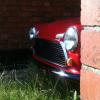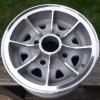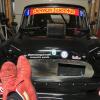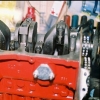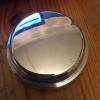And there you are changing a parameter. The cam has nothing to do with the Spring. Valve lift does.
High lift rockers put more force on the cam fact.
A longer leaver exerts more force.
Same valve lift from different cams one operating through standard rockers and one operating through 1:1.5 rockers with the same Spring the high lift rockers will put more force on the cam.
I think that would depend on spring tension, lift, and even zinc content in the oil. The cam can't "know" what the rocker ratio is. It will have forces acting on it which can be equalized between 1.5 and 1.3 rockers by properly adjusting spring load. If springs designed for 1.3s are used on 1.5s, it will almost certainly increase cam wear.
Springs are not designed for the rockers they are designed to control the valve so you don't get bounce. And so you don't get coil bind. That could be from a high lift cam and standard rockers or a short lift cam with high lift rockers. The Spring will be the same but the loads seen by the cam will be more.
But with high lift rockers, the valve train up to the rocker moves through less distance and therefore has lower reciprocating forces which in turn require less spring pressure to control. It's when the inertia of the lifter side of the valve train overcomes the valve's spring force that valve float occurs. Higher ratio rockers give more mechanical advantage when returning the valve train to the closed position and therefore lighter springs should be used to achieve the least power losses and least wear.
What you trying to do? Get valve bounce?
Mad.
It's the laws of physics. Overspringing your valves is mad because it's simply a waste of horsepower and valve train life, no matter what rockers are used. What's exactly required to control the valves, plus a little for a safety factor (to accommodate accidental over revving) is the route to maximum horsepower and long equipment life. That's a fact. I think the stories of people wiping their cams with high lift rockers are simply because they've oversprung their valves by not taking the physics of the situation into account as outlined above.
I would also add that the cam profile does affect spring choice because a pointier cam profile means faster valve train acceleration and therefore higher loads which require stronger spring force to control. Your first few lines above agree with my assertion that higher lift rockers mean that weaker springs can be used because the additional leverage better controls the valve train.
Edited by hhhh, 15 October 2015 - 09:18 PM.




